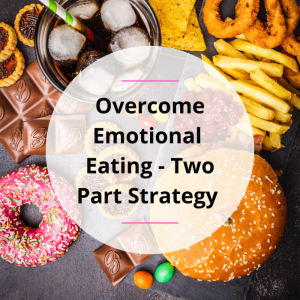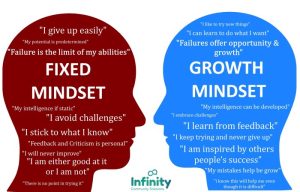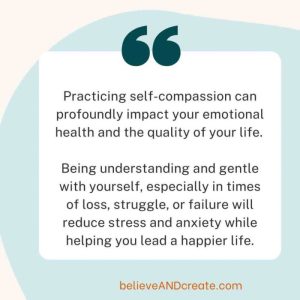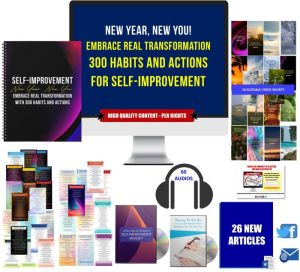Sleep Patterns and Mental Health A Comprehensive Guide
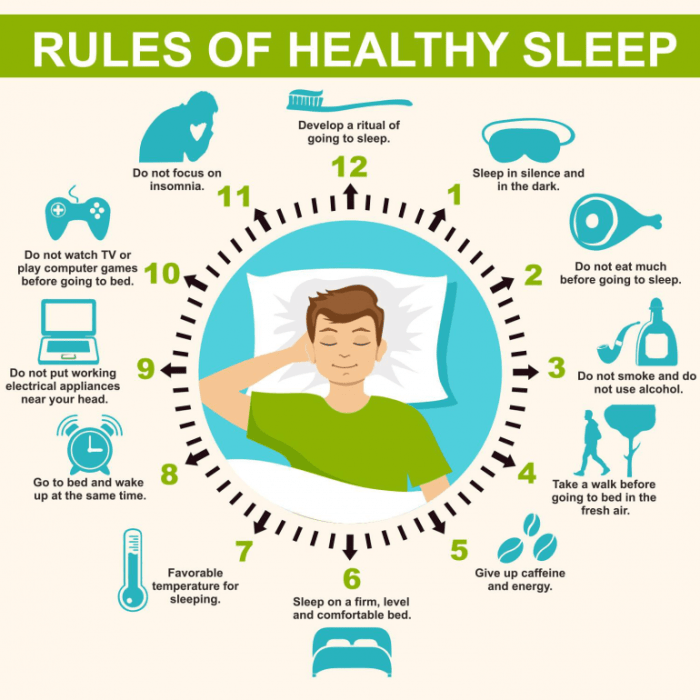
Sleep patterns and mental health are intricately linked, a bidirectional relationship influencing our overall well-being. Poor sleep can exacerbate existing mental health conditions like anxiety and depression, while untreated mental health issues often disrupt sleep cycles. Understanding this connection is crucial for developing effective strategies for improved mental and physical health.
This exploration delves into the various aspects of this relationship, examining the impact of sleep disorders on mental health, exploring stress and anxiety management techniques, and outlining resources for depression support. We’ll also discuss mindfulness practices, resilience-building strategies, and the importance of seeking professional help when needed. The aim is to provide a comprehensive understanding of how sleep and mental health intertwine, empowering readers to take proactive steps towards better well-being.
The Relationship Between Sleep Patterns and Mental Health
Sleep and mental well-being are intricately linked, existing in a continuous cycle of influence. Poor sleep can significantly worsen mental health conditions, while pre-existing mental health issues often disrupt sleep patterns. Understanding this bidirectional relationship is crucial for effective treatment and management of both sleep disorders and mental health challenges.
Bidirectional Relationship Between Sleep Quality and Mental Well-being
The connection between sleep and mental health is not simply one of cause and effect; it’s a complex interplay. Insufficient sleep can trigger or exacerbate symptoms of anxiety and depression, leading to a vicious cycle of poor sleep and worsening mental health. Conversely, individuals struggling with anxiety or depression often experience sleep disturbances, further impacting their overall well-being. This cyclical nature underscores the importance of addressing both sleep and mental health issues concurrently.
For example, someone with anxiety might experience racing thoughts at night, making it difficult to fall asleep. The resulting sleep deprivation then intensifies their anxiety levels the following day, creating a self-perpetuating loop.
Impact of Sleep Disorders on Mental Health
Various sleep disorders significantly contribute to the development and worsening of mental health conditions. Insomnia, characterized by difficulty falling asleep, staying asleep, or experiencing non-restorative sleep, is strongly associated with anxiety, depression, and other mood disorders. Sleep apnea, a condition where breathing repeatedly stops and starts during sleep, is linked to increased irritability, difficulty concentrating, and a heightened risk of depression.
Other sleep disorders, such as restless legs syndrome and narcolepsy, can also negatively impact mental health by disrupting sleep architecture and leading to daytime fatigue and cognitive impairment. The chronic stress and frustration associated with these conditions can further contribute to mental health challenges.
Sleep Deprivation and Exacerbation of Depression and Anxiety Symptoms
Sleep deprivation acts as a potent stressor, amplifying the symptoms of both depression and anxiety. Lack of sleep impairs cognitive function, making it harder to concentrate, solve problems, and manage emotions effectively. This cognitive impairment can lead to increased irritability, impulsivity, and difficulty coping with daily stressors, thus exacerbating existing symptoms of depression and anxiety. Furthermore, sleep deprivation disrupts the neurochemical balance in the brain, affecting levels of serotonin and norepinephrine – neurotransmitters crucial for mood regulation.
This imbalance can intensify feelings of sadness, hopelessness, fear, and worry. For instance, studies have shown that even a single night of sleep deprivation can impair emotional regulation and increase negative mood in individuals with a predisposition to depression.
Comparison of Sleep Patterns in Individuals With and Without Mental Health Disorders
Individuals with mental health disorders often exhibit distinct sleep patterns compared to their mentally healthy counterparts. These differences can include changes in sleep duration (insomnia or hypersomnia), sleep latency (time taken to fall asleep), sleep efficiency (percentage of time spent asleep while in bed), and sleep fragmentation (frequent awakenings during the night). People with depression frequently report prolonged sleep duration, but their sleep is often non-restorative, meaning they don’t feel refreshed upon waking.
Conversely, those with anxiety often experience insomnia, characterized by difficulty falling asleep and staying asleep. These variations highlight the need for personalized approaches to sleep interventions based on the specific mental health condition.
Common Sleep Disturbances Associated with Different Mental Health Conditions
| Mental Health Condition | Common Sleep Disturbances | Frequency | Severity |
|---|---|---|---|
| Depression | Insomnia, hypersomnia, early morning awakenings, non-restorative sleep | High | Variable |
| Anxiety | Insomnia, difficulty falling asleep, frequent awakenings, nightmares | High | Variable |
| Post-traumatic stress disorder (PTSD) | Insomnia, nightmares, sleepwalking, sleep terrors | High | Often severe |
| Bipolar disorder | Insomnia during manic episodes, hypersomnia during depressive episodes | High | Variable, depending on phase |
Stress and Anxiety Management Techniques
Stress and anxiety are prevalent issues in modern life, significantly impacting mental and physical well-being. Effective management strategies are crucial for maintaining a healthy balance and improving overall quality of life. This section explores practical lifestyle changes and techniques to alleviate stress and anxiety.
Lifestyle Changes for Stress Reduction
Adopting a healthier lifestyle plays a pivotal role in managing stress and anxiety. Regular exercise, balanced nutrition, and sufficient sleep are cornerstones of this approach. These elements work synergistically to improve mood, enhance resilience, and reduce the physiological effects of stress. For example, regular physical activity releases endorphins, natural mood boosters, while a balanced diet provides the necessary nutrients for optimal brain function.
Adequate sleep allows the body and mind to repair and restore, reducing susceptibility to stress and anxiety.
Benefits of Exercise, Nutrition, and Sleep
Regular physical activity, even moderate intensity exercise like brisk walking for 30 minutes most days of the week, can significantly reduce stress hormones like cortisol. A balanced diet rich in fruits, vegetables, whole grains, and lean protein provides sustained energy and reduces mood swings associated with blood sugar fluctuations. Aim for 7-9 hours of quality sleep per night to allow your body to consolidate memories and repair itself, reducing the accumulation of stress and improving cognitive function.
Lack of sleep, conversely, exacerbates anxiety and impairs coping mechanisms.
Relaxation Techniques: Deep Breathing and Mindfulness
Deep breathing exercises and mindfulness meditation are powerful tools for immediate stress reduction. Deep, slow breaths activate the parasympathetic nervous system, counteracting the effects of the stress response. Mindfulness involves focusing on the present moment without judgment, helping to detach from anxious thoughts and worries. A simple deep breathing exercise involves inhaling deeply through the nose, holding for a few seconds, and exhaling slowly through the mouth.
Mindfulness meditation can be practiced through guided apps or by simply focusing on your breath or bodily sensations.
Implementing a Stress Management Plan
A comprehensive stress management plan requires a structured approach.
- Identify Stressors: Keep a journal to track your stressors and their impact. This helps pinpoint patterns and triggers.
- Set Realistic Goals: Start with small, achievable changes. Don’t try to overhaul your life overnight.
- Prioritize Self-Care: Schedule time for activities you enjoy, such as hobbies or spending time in nature.
- Practice Relaxation Techniques: Incorporate deep breathing and mindfulness into your daily routine.
- Seek Support: Talk to friends, family, or a therapist about your stress and anxiety.
- Review and Adjust: Regularly evaluate your plan’s effectiveness and make adjustments as needed.
Resources for Stress and Anxiety Management
Several resources are available to support stress and anxiety management.
- Apps: Calm, Headspace, Insight Timer (offer guided meditations and relaxation techniques).
- Websites: The Anxiety & Depression Association of America (ADAA), The National Institute of Mental Health (NIMH) (provide information and resources).
- Books: “Mindfulness for Beginners” by Jon Kabat-Zinn, “Daring Greatly” by Brené Brown (offer practical advice and coping strategies).
Depression Support and Resources
Depression is a serious mental health condition affecting millions worldwide. Understanding its signs, accessing appropriate treatment, and building a strong support system are crucial for recovery. This section provides information on recognizing depression, available treatment options, the importance of social support, and helpful resources.
Common Signs and Symptoms of Depression
Depression manifests differently in individuals, but common indicators include persistent sadness, loss of interest in activities once enjoyed (anhedonia), significant changes in appetite or sleep patterns, fatigue or low energy, feelings of worthlessness or excessive guilt, difficulty concentrating, and recurrent thoughts of death or suicide. The severity and duration of these symptoms vary, and a persistent presence of several of these signs warrants professional evaluation.
It’s important to remember that experiencing some of these symptoms occasionally doesn’t necessarily indicate depression; however, a persistent and pervasive presence should be taken seriously.
Treatment Options for Depression
Several effective treatments are available for depression. These include psychotherapy (talk therapy), medication (antidepressants), or a combination of both. Psychotherapy, such as cognitive behavioral therapy (CBT) or interpersonal therapy (IPT), helps individuals identify and change negative thought patterns and behaviors contributing to depression. Antidepressants, prescribed by a psychiatrist or other qualified healthcare professional, work by altering brain chemistry to improve mood and reduce depressive symptoms.
Other treatments may include light therapy for seasonal affective disorder (SAD) and electroconvulsive therapy (ECT) in severe cases. The choice of treatment depends on individual needs and preferences, often determined through collaboration with a mental health professional.
The Role of Social Support in Recovery from Depression
Social support plays a vital role in recovery from depression. Connecting with loved ones, friends, and support groups provides emotional comfort, reduces feelings of isolation, and encourages adherence to treatment plans. Supportive relationships offer a sense of belonging and validation, helping individuals cope with challenging emotions and fostering a sense of hope. Open communication with family and friends about struggles with depression can facilitate understanding and encourage a supportive environment.
Actively participating in social activities, even when motivation is low, can also contribute to improved mood and overall well-being.
Resources for Individuals Experiencing Depression
Accessing support is crucial for managing depression effectively. Several resources are available:
- Helplines: Many countries have national helplines offering immediate support and crisis intervention. These services provide confidential assistance and can connect individuals with mental health professionals.
- Support Groups: Support groups offer a safe space for individuals with depression to share experiences, connect with others facing similar challenges, and learn coping strategies. These groups can be found both in person and online.
- Online Communities: Online forums and communities provide a platform for connecting with others experiencing depression, sharing information, and finding support. However, it’s important to be mindful of the potential for misinformation and to prioritize information from reliable sources.
The Importance of Seeking Professional Help for Severe Depression
Severe depression can significantly impair daily functioning and poses a risk of self-harm or suicide. Seeking professional help is crucial in such cases. A mental health professional can conduct a thorough assessment, diagnose the condition accurately, and develop a personalized treatment plan. Early intervention and appropriate treatment are essential for preventing the long-term consequences of severe depression and improving the chances of a full recovery.
Delaying treatment can worsen symptoms and increase the risk of complications. Don’t hesitate to reach out for help if you or someone you know is experiencing severe depression.
Mindfulness Practices for Mental Well-being: Sleep Patterns And Mental Health
Mindfulness, the practice of paying attention to the present moment without judgment, offers a powerful pathway to improved mental health. By cultivating awareness of our thoughts, feelings, and bodily sensations, we can reduce stress, enhance emotional regulation, and foster a greater sense of well-being. This section explores the principles of mindfulness, provides a guided meditation, details the benefits of Mindfulness-Based Stress Reduction (MBSR), and offers practical tips for integrating mindfulness into daily life.
Principles of Mindfulness and its Application in Improving Mental Health
Mindfulness is grounded in the principle of present moment awareness. It involves observing thoughts and feelings as they arise, without getting carried away by them or reacting impulsively. This non-judgmental observation allows us to create space between our thoughts and our actions, breaking the cycle of automatic, often negative, responses to stress. By consistently practicing mindfulness, we develop a greater capacity for self-awareness, emotional regulation, and resilience in the face of challenges.
This increased self-awareness helps us identify triggers for stress and anxiety, allowing us to develop more adaptive coping mechanisms. Studies have shown a correlation between regular mindfulness practice and reduced symptoms of anxiety, depression, and chronic pain.
Guided Meditation for Relaxation and Stress Reduction
Find a comfortable position, either sitting or lying down. Close your eyes gently. Bring your attention to your breath, noticing the sensation of the air entering and leaving your nostrils, the rise and fall of your chest or abdomen. As you focus on your breath, thoughts may arise. Acknowledge them without judgment, simply observing them as they pass like clouds in the sky.
If your mind wanders, gently redirect your attention back to your breath. Now, bring your awareness to your body, noticing any sensations – tingling, warmth, coolness. Again, observe these sensations without judgment. Continue to focus on your breath and body sensations for five minutes. When you’re ready, slowly bring your awareness back to your surroundings, gently opening your eyes.
Benefits of Mindfulness-Based Stress Reduction (MBSR) Techniques
Mindfulness-Based Stress Reduction (MBSR) is an eight-week program that integrates mindfulness meditation, body scan meditations, and gentle movement practices like yoga. MBSR has been shown to reduce stress, improve sleep quality, and enhance emotional regulation. Participants often report increased self-awareness, improved focus, and a greater capacity for coping with difficult emotions and situations. Studies have demonstrated the effectiveness of MBSR in managing a range of conditions, including chronic pain, anxiety disorders, and depression.
Practical Tips for Incorporating Mindfulness into Daily Life
Incorporating mindfulness into daily life doesn’t require extensive time commitments. Simple practices can be integrated throughout the day. Start with short periods of mindful breathing, perhaps during your commute or while waiting in line. Practice mindful eating, paying attention to the taste, texture, and smell of your food. Engage in mindful walking, noticing the sensations of your feet on the ground and the movement of your body.
Throughout the day, pause periodically to bring your attention to your breath and body. These brief moments of mindfulness can significantly contribute to a calmer, more centered state of mind.
Stages of a Mindfulness Practice: A Visual Representation
Imagine a circle divided into four quadrants. The first quadrant represents the initial settling in, finding a comfortable posture and focusing on the breath. The second quadrant shows the arising of thoughts and feelings – the mind wandering. The third quadrant depicts the gentle redirection of attention back to the breath or chosen focal point, the non-judgmental observation.
The fourth quadrant represents the integration and carryover of the mindful state into daily life, experiencing a sense of calm and presence. The cycle is continuous, representing the ongoing nature of mindfulness practice.
Mental Health Advocacy and Awareness
Openly discussing mental health is crucial for fostering understanding and support. Reducing the stigma associated with mental illness is paramount to ensuring individuals feel comfortable seeking help and receiving the care they need. This involves challenging societal misconceptions and promoting a culture of empathy and acceptance.The importance of reducing stigma surrounding mental health issues cannot be overstated. Negative attitudes and discriminatory practices create barriers to accessing treatment and support, leading to poorer outcomes for individuals experiencing mental health challenges.
Open conversations, public awareness campaigns, and the active involvement of individuals and communities are all vital components in dismantling these harmful barriers.
The Role of Advocacy Groups in Promoting Mental Health Awareness and Support
Advocacy groups play a significant role in raising awareness, providing support, and advocating for policy changes. These organizations work tirelessly to educate the public, lobby for improved services, and provide a vital lifeline for individuals and families affected by mental illness. Their activities range from fundraising and research to direct support services and public awareness campaigns. They offer a crucial link between individuals needing support and the resources available.
Advocating for Improved Mental Health Services and Policies
Advocating for better mental health services and policies requires a multifaceted approach. This involves contacting elected officials to express concerns and support specific legislation, participating in public forums and town halls, and actively engaging in community discussions. Supporting organizations that lobby for improved access to care and funding is also essential. Furthermore, sharing personal stories and experiences can be incredibly powerful in influencing public opinion and policy decisions.
Examples of Successful Mental Health Awareness Campaigns
Several campaigns have successfully raised awareness and reduced stigma around mental health. For instance, the “You Are Not Alone” campaign used powerful imagery and testimonials to connect with a broad audience, emphasizing the prevalence of mental health challenges and the importance of seeking help. Other successful campaigns have utilized social media effectively, leveraging the reach of online platforms to disseminate information and encourage open dialogue.
These campaigns often highlight the stories of individuals who have successfully navigated mental health challenges, offering hope and inspiration to others.
Organizations Involved in Mental Health Advocacy
A strong network of organizations is dedicated to mental health advocacy. Their contributions are essential in driving positive change.
- The National Alliance on Mental Illness (NAMI): A leading voice in advocating for individuals and families affected by mental illness.
- The Mental Health America (MHA): Works to improve mental health outcomes through advocacy, education, and community-based programs.
- The Depression and Bipolar Support Alliance (DBSA): Provides support, education, and advocacy for individuals and families affected by mood disorders.
- The Jed Foundation (JED): Dedicated to protecting emotional health and preventing suicide for our nation’s teens and young adults.
- The American Foundation for Suicide Prevention (AFSP): Works to understand and prevent suicide through research, education, and advocacy.
Building Resilience and Coping Skills
Resilience is the ability to bounce back from adversity, trauma, tragedy, threats, or significant sources of stress—such as family and relationship problems, serious health problems, or workplace and financial stressors. It’s not about avoiding hardship, but rather about adapting well in the face of challenges, maintaining a positive outlook, and finding strength even in difficult circumstances. A strong sense of resilience is crucial for overall mental well-being, contributing to better emotional regulation and a greater capacity to navigate life’s inevitable ups and downs.Resilience isn’t an innate trait; it’s a skill that can be learned and developed over time.
By actively engaging in strategies designed to enhance coping mechanisms and emotional regulation, individuals can significantly increase their resilience and improve their ability to manage stress and adversity. This process involves recognizing personal strengths, developing effective coping strategies, and fostering a supportive network of individuals.
Strategies for Building Resilience
Building resilience involves a multifaceted approach that incorporates various techniques. These strategies are not mutually exclusive; rather, they complement each other, creating a comprehensive framework for navigating challenging situations. Consistent practice and mindful application are key to their effectiveness. The process often involves self-reflection, identifying personal strengths and weaknesses, and actively working to cultivate positive coping mechanisms.
Positive Coping Mechanisms in Challenging Situations
Effective coping mechanisms help individuals manage stress and adversity constructively. Examples include engaging in regular physical exercise to alleviate tension and improve mood; practicing mindfulness and meditation to cultivate present moment awareness and reduce anxiety; connecting with supportive friends and family to build a strong social network and share experiences; pursuing hobbies and interests to foster a sense of accomplishment and joy; and setting realistic goals and prioritizing tasks to maintain a sense of control and reduce feelings of overwhelm.
For instance, facing a job loss, a resilient individual might utilize their network to find new opportunities, engage in volunteering to maintain purpose, and actively pursue further education or skill development.
The Role of Self-Compassion in Building Resilience, Sleep patterns and mental health
Self-compassion, treating oneself with kindness and understanding during difficult times, is a vital component of resilience. It involves acknowledging imperfections, accepting negative emotions without judgment, and offering oneself the same support and understanding one would offer a friend facing similar challenges. Instead of engaging in self-criticism, self-compassion encourages self-acceptance and promotes a sense of self-worth, which is essential for navigating setbacks and building emotional strength.
For example, after a failed exam, a self-compassionate individual might acknowledge their disappointment without self-blame, reminding themselves that everyone makes mistakes and focusing on learning from the experience.
Resilience-Building Techniques
| Technique | Benefits | Example | Application |
|---|---|---|---|
| Mindfulness Meditation | Reduces stress, improves focus, enhances self-awareness | Daily 10-minute meditation session | Practicing mindfulness in daily activities |
| Physical Exercise | Releases endorphins, improves mood, reduces anxiety | Regular walks, yoga, team sports | Incorporating physical activity into routine |
| Social Support | Provides emotional support, reduces feelings of isolation | Spending time with loved ones, joining a support group | Actively maintaining and nurturing relationships |
| Cognitive Restructuring | Challenges negative thought patterns, promotes positive thinking | Identifying and reframing negative self-talk | Developing positive affirmations and self-talk |
Sleep Hygiene and Mental Health
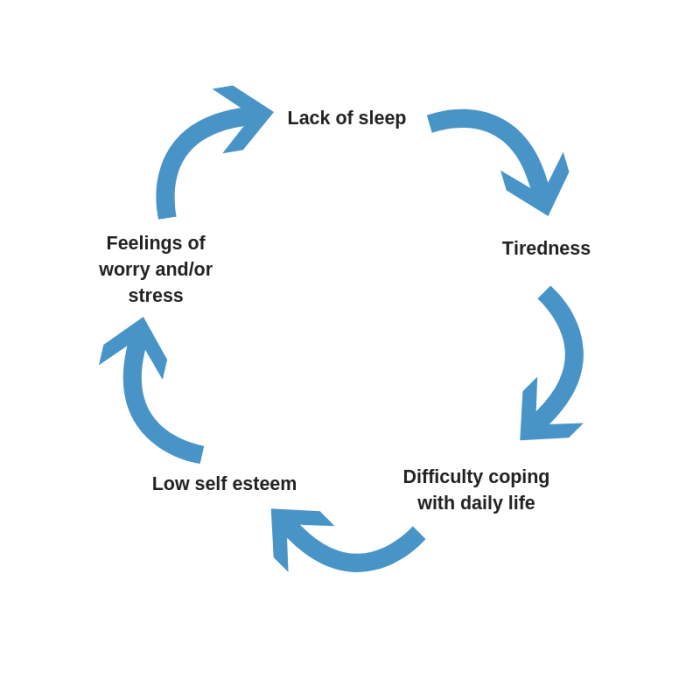
Sleep hygiene, the practices and habits that promote good quality sleep, plays a crucial role in maintaining and improving mental well-being. A consistent and restorative sleep pattern significantly impacts our mood, cognitive function, and emotional resilience. Neglecting sleep hygiene can have detrimental effects on mental health, leading to increased vulnerability to stress, anxiety, and depression.The impact of sleep deprivation on mood, cognition, and emotional regulation is substantial.
Lack of sleep impairs our ability to regulate emotions, making us more irritable, impulsive, and prone to negative thinking. Cognitively, sleep deprivation leads to reduced concentration, impaired memory, and difficulty with problem-solving. Mood-wise, sleep loss often results in increased feelings of sadness, anxiety, and even anger. These effects can accumulate over time, contributing to a vicious cycle where poor sleep exacerbates existing mental health challenges or even triggers new ones.
Improving Sleep Quality Through Practical Strategies
Creating a conducive sleep environment and establishing a relaxing bedtime routine are key strategies for improving sleep quality. A cool, dark, and quiet bedroom free from distractions like electronic devices promotes better sleep. A consistent bedtime and wake-up time, even on weekends, helps regulate the body’s natural sleep-wake cycle (circadian rhythm). Relaxing activities before bed, such as taking a warm bath, reading a book, or practicing gentle stretching, can help signal to the body that it’s time to wind down.
Avoiding caffeine and alcohol before bed is also crucial, as these substances can interfere with sleep.
The Use of Sleep Aids and Potential Side Effects
Sleep aids, including over-the-counter medications and prescription drugs, can be helpful in some cases of short-term sleep problems. However, it’s crucial to understand their potential side effects and to use them judiciously under the guidance of a healthcare professional. Some common side effects include daytime drowsiness, dizziness, and dependence. Long-term use of sleep aids should be avoided unless absolutely necessary, and it’s important to discuss alternative strategies for improving sleep hygiene before resorting to medication.
For example, cognitive behavioral therapy for insomnia (CBT-I) has proven highly effective in addressing chronic sleep problems without reliance on medication.
Checklist for Improving Sleep Hygiene
Establishing good sleep hygiene requires consistent effort. The following checklist Artikels key steps to improve sleep quality:
- Maintain a consistent sleep schedule, going to bed and waking up at the same time each day, even on weekends.
- Create a relaxing bedtime routine that includes calming activities like reading or taking a warm bath.
- Make sure your bedroom is dark, quiet, and cool.
- Avoid caffeine and alcohol before bed.
- Get regular exercise, but avoid strenuous activity close to bedtime.
- Limit screen time before bed.
- Ensure your mattress and pillows are comfortable and supportive.
- Practice relaxation techniques such as deep breathing or meditation.
- Expose yourself to sunlight during the day to help regulate your circadian rhythm.
- If you are struggling with sleep, consider seeking professional help from a doctor or sleep specialist.
Workplace Mental Health and Well-being

The modern workplace presents significant challenges to mental well-being. Long hours, demanding workloads, and pressure to perform can contribute to stress, anxiety, and burnout, impacting both individual employees and overall organizational productivity. A proactive approach to workplace mental health is crucial for fostering a healthy and productive environment.
The Impact of Workplace Stress on Mental Health
Workplace stress manifests in various ways, from mild anxiety and irritability to severe conditions like depression and anxiety disorders. Factors such as job insecurity, work-life imbalance, bullying, harassment, and lack of control over one’s work significantly contribute to this stress. The consequences can be substantial, including reduced productivity, increased absenteeism and presenteeism (being physically present but mentally disengaged), and higher healthcare costs for both the employee and the employer.
Chronic stress can also lead to physical health problems, such as cardiovascular disease and weakened immunity. Recognizing these links is paramount to implementing effective interventions.
Strategies for Promoting Mental Well-being in the Workplace
Promoting mental well-being requires a multi-faceted approach. This includes providing access to employee assistance programs (EAPs) that offer confidential counseling and support services. Implementing flexible work arrangements, such as remote work options or flexible hours, can help employees better manage work-life balance. Encouraging regular breaks throughout the workday and promoting healthy lifestyle choices through wellness programs (e.g., on-site fitness facilities, health screenings, healthy eating initiatives) can also contribute significantly.
Furthermore, providing mental health training for managers to help them identify and support employees struggling with mental health issues is vital. Finally, fostering a culture of open communication where employees feel comfortable discussing mental health concerns without fear of stigma or retribution is essential.
The Importance of Creating a Supportive and Inclusive Work Environment
A supportive and inclusive work environment is foundational to good mental health in the workplace. This means creating a culture of respect, empathy, and understanding where employees feel valued, respected, and supported. This includes implementing clear anti-bullying and harassment policies and ensuring fair and equitable treatment for all employees. Leaders should model healthy behaviors and prioritize employee well-being.
Regular communication, feedback, and opportunities for professional development can enhance employee morale and job satisfaction. Promoting diversity and inclusion further contributes to a more supportive and welcoming workplace for everyone.
Examples of Successful Workplace Mental Health Programs
Many organizations have successfully implemented mental health programs. For example, some companies offer mindfulness training programs to help employees manage stress and improve focus. Others have established peer support networks, where trained employees provide informal support to their colleagues. Some organizations provide mental health days as part of their leave policy, recognizing the importance of time off for mental health recovery.
Companies like Google and Microsoft have invested heavily in comprehensive mental health initiatives, including on-site mental health professionals and extensive resources for employees. These programs demonstrate the tangible benefits of prioritizing employee well-being.
A Workplace Mental Health Policy Incorporating Employee Support Initiatives
A comprehensive workplace mental health policy should include the following key elements: a clear statement of commitment to employee mental well-being; details of available support services, such as EAPs and mental health resources; a description of the organization’s policies regarding stress management, flexible work arrangements, and leave for mental health reasons; procedures for reporting and addressing workplace bullying and harassment; a commitment to promoting a culture of open communication and support; and a plan for regular review and updates to the policy to ensure it remains relevant and effective.
The policy should be readily accessible to all employees and should be communicated effectively through various channels. Regular training for managers and employees on mental health awareness and support is also crucial.
Overcoming Addictions and Substance Abuse
Addiction is a complex issue significantly impacting mental health. It’s characterized by compulsive drug seeking and use, despite harmful consequences. The relationship between addiction and mental health disorders is often bidirectional, meaning one can exacerbate the other. For example, individuals with depression may turn to substances for self-medication, leading to addiction, while addiction itself can trigger or worsen mental health conditions like anxiety and depression.
The Link Between Addiction and Mental Health Disorders
Many mental health disorders, including depression, anxiety, post-traumatic stress disorder (PTSD), and bipolar disorder, are frequently co-occurring with substance abuse disorders. This co-occurrence is known as comorbidity. The exact mechanisms are not fully understood, but research suggests shared genetic vulnerabilities, similar neurobiological pathways, and psychosocial factors contribute to this complex interplay. For instance, individuals with PTSD may use substances to cope with trauma-related symptoms, creating a vicious cycle of addiction and worsening mental health.
Effective treatment requires addressing both the addiction and the underlying mental health condition concurrently.
Treatment Options for Substance Abuse
Various treatment options are available to help individuals overcome substance abuse. These options are often tailored to the individual’s specific needs and circumstances, considering the type of substance, severity of addiction, and co-occurring mental health conditions. Treatment approaches range from medication-assisted treatment (MAT) to behavioral therapies.
Medication-Assisted Treatment (MAT)
MAT utilizes medications to reduce withdrawal symptoms, cravings, and the risk of relapse. Different medications are used depending on the substance of abuse. For example, methadone or buprenorphine are used for opioid addiction, while acamprosate or naltrexone may be used for alcohol addiction. These medications work by reducing the intensity of withdrawal symptoms and cravings, making it easier for individuals to participate in therapy and develop coping mechanisms.
The efficacy of MAT is significantly increased when combined with behavioral therapies.
Behavioral Therapies
Behavioral therapies, such as cognitive behavioral therapy (CBT) and motivational interviewing (MI), help individuals identify and change the thoughts, feelings, and behaviors that contribute to their addiction. CBT focuses on identifying and challenging negative thought patterns and developing coping strategies for high-risk situations. MI helps individuals explore their ambivalence about change and motivates them to make positive choices.
These therapies address underlying psychological issues that may contribute to addiction and teach relapse prevention techniques.
The Importance of Seeking Professional Help for Addiction
Seeking professional help is crucial for overcoming addiction. Addiction is a chronic disease, and recovery is a process that requires ongoing support and treatment. Professional help provides access to evidence-based treatments, personalized care plans, and support networks. Early intervention significantly improves the chances of successful recovery. Delaying treatment can lead to more severe consequences, including health complications, relationship problems, and even death.
Resources for Individuals Struggling with Addiction
Accessing appropriate resources is essential for successful recovery. These resources provide crucial support and guidance throughout the recovery journey.
- SAMHSA National Helpline: 1-800-662-HELP (4357) – This confidential, free, 24-hour-a-day, 365-day-a-year, information service, in English and Spanish, provides referrals to local treatment facilities, support groups, and community-based organizations.
- National Institute on Drug Abuse (NIDA): Provides comprehensive information on drug abuse and addiction, including research findings, treatment options, and prevention strategies.
- Alcoholics Anonymous (AA) and Narcotics Anonymous (NA): Peer support groups that offer a supportive community for individuals recovering from alcohol and drug addiction, respectively.
- Substance Abuse and Mental Health Services Administration (SAMHSA): Offers a wealth of information, resources, and treatment locator tools on their website.
Relapse Prevention Strategies
Relapse is a common part of the recovery process. However, implementing relapse prevention strategies can significantly reduce the likelihood of relapse and improve long-term outcomes.
- Developing a strong support system: Connecting with family, friends, support groups, or sponsors can provide crucial emotional and practical support.
- Identifying and managing triggers: Recognizing situations, people, or feelings that increase the risk of relapse and developing coping strategies to manage them is essential.
- Developing healthy coping mechanisms: Finding healthy ways to manage stress, anxiety, and other difficult emotions, such as exercise, meditation, or hobbies.
- Participating in ongoing therapy or support groups: Continued professional support and peer support are vital for maintaining sobriety.
- Planning for potential setbacks: Developing a relapse prevention plan that includes steps to take if a relapse occurs can help minimize the negative consequences.
Ultimately, the journey towards improved mental health often begins with prioritizing sleep. By understanding the complex interplay between sleep patterns and mental well-being, and by implementing effective strategies for managing stress, improving sleep hygiene, and seeking professional support when necessary, individuals can significantly enhance their quality of life. This holistic approach emphasizes the interconnectedness of physical and mental health, highlighting the importance of proactive self-care and the availability of resources for those seeking support.
Question & Answer Hub
What are some common signs of poor sleep hygiene?
Irregular sleep schedules, inconsistent bedtime routines, excessive caffeine or alcohol consumption before bed, and an uncomfortable sleep environment are common indicators.
How much sleep do I need?
Most adults need 7-9 hours of quality sleep per night, although individual needs may vary.
Can sleep aids be used long-term?
Long-term use of sleep aids is generally not recommended due to potential side effects and the development of dependence. They should be used under the guidance of a healthcare professional.
Is it normal to experience occasional insomnia?
Occasional insomnia is common, but persistent insomnia may indicate an underlying medical or psychological condition requiring professional evaluation.
